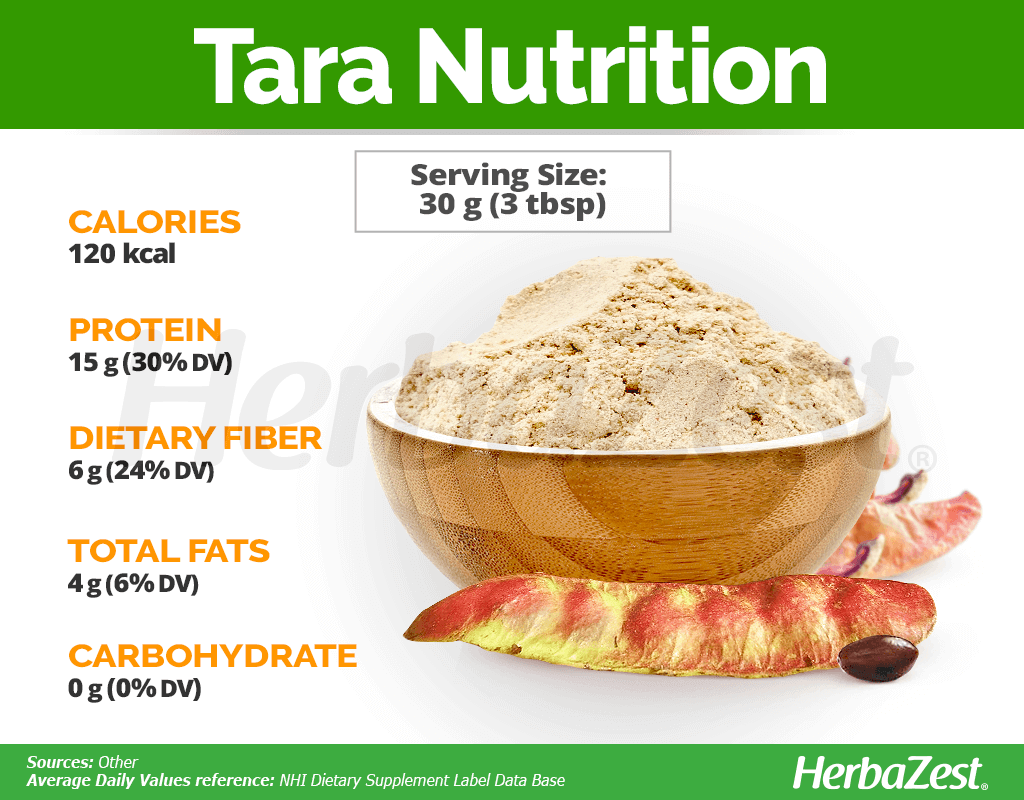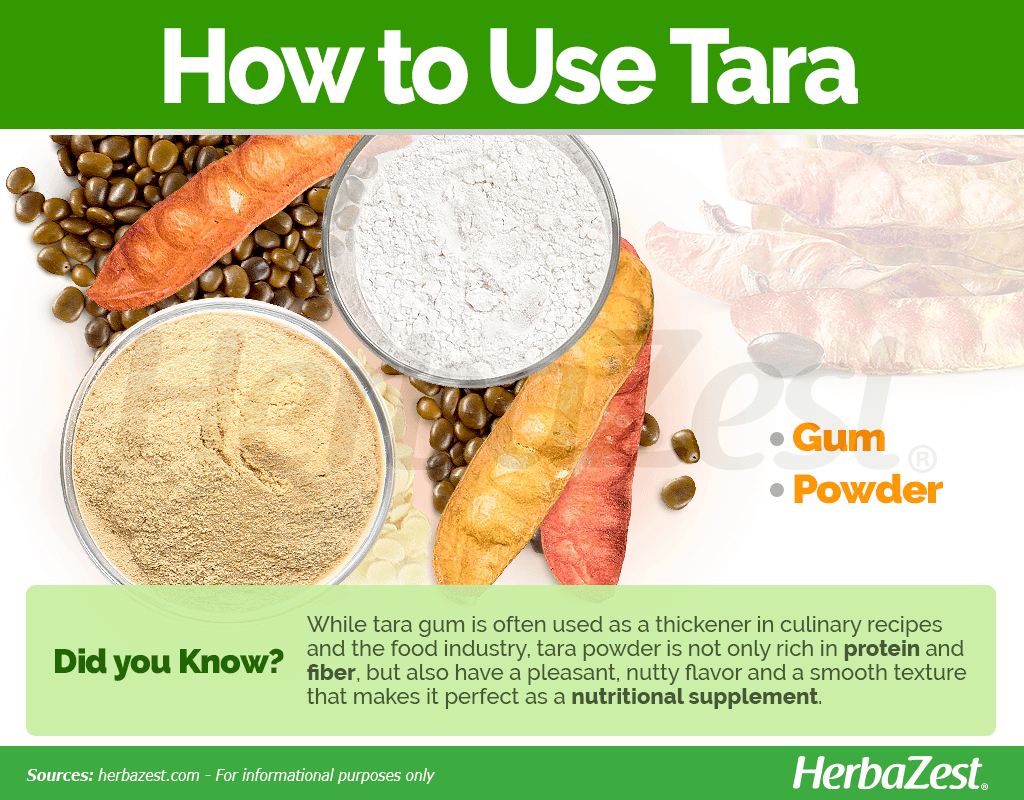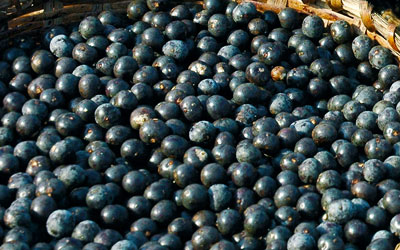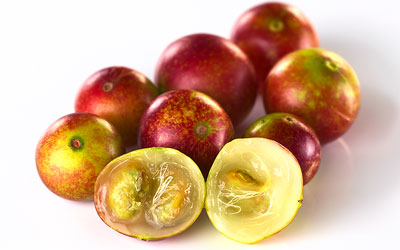The tara tree, a type of nickernut, is indigenous to Peru. While tara gum is commercialized worldwide as a popular dye and thickener for industrial and culinary uses, tara seeds and pods have been used since ancient times as a source of medicinal benefits that only recently have caught scientific attention.
Tara Medicinal Properties
Health Benefits of Tara
Although tara fruit, a South American type of nickernut, have been consumed for centuries along the arid Peruvian coastline, its medicinal properties have not been studied extensively. So far, tara has been touted to provide the following benefits as a dietary supplement:
Aiding digestive health. Tara fruit is rich in tannins and dietary fiber, both soluble and insoluble, thus promoting smooth digestion and relieving both constipation and diarrhea.
Supporting muscle growth. Tara seeds and pods are a good source of vegetable protein, which makes them a good option for building and maintaining a healthy muscle mass.
Additionally, the nickernut is rich in antioxidant compounds, which promote a healthy immune system and boost metabolic functions, thus aiding weight management.
In its indigenous South American lands, tara has been used since pre-Incan times, and many of these practices are still alive among indigenous communities.
Traditional uses of tara include treating skin irritations and sore throats.
How It Works
Tara or nickernut's most important phytochemical compounds are tannins (41-45%), galactomannans, and glucosinolates.
Tannins (also known as tannic acid) are a type of water-soluble polyphenols with great antioxidant, antimicrobial, and anti-inflammatory properties. These compounds are abundant in plants, but are particularly high in tara pods and seeds. A particular type of tannins on tara seed pods, called gallotannins, have shown strong antimicrobial actions against common pathogenic bacteria, such as Staphylococcus aureus and Pseudomonas fluorescens.1 Additionally, the high levels of gallic acid, another type of tannin in tara seeds and pods, have been shown to exert a strong antioxidant activity, with promising nutraceutical applications.2
On the other hand, galactomannans are plant polysaccharides that have shown immunomodulatory effects by stimulating the activity of human monocyte-derived dendritic cells (MDDC ), which are derived from bone marrow leukocites and are responsible for adaptive responses of the immune system.3 Hence, tara's galactomannans hold potential to be used as a natural aid for immunotherapy.
Additionally, glucosinolates are biologically active compounds with powerful antimicrobial activity that have shown effective against many bacterial strains. Other beneficial effects of glucosinolates include regulating inflammatory markers, stress responses, metabolism, and antioxidant activities.4
Tara Side Effects
Processed tara powder and gum are considered generally safe; however, nickernuts are incredibly rich in tannins, which are nontoxic once cooked but potentially harmful if manipulated or ingested in their natural form. Some reported side effects are skin irritation when applied topically, as well as nausea, vomiting and diarrhea if raw seeds are ingested.
- Medicinal action Antioxidant, Digestive
- Key constituents Amino acids, galactomannans, glucosinolates, and tannins.
- Ways to use Powder
- Medicinal rating (2) Minorly useful plant
- Safety ranking Safe

Tara Nutrition
While tara gum is basically composed of gallactomanans and other fitochemicals that are responsible for its thickening qualities, tara powder provides an outstanding amount of protein. It is also full of dietary fiber as well as beneficial polyphenols (mostly gallic acid) with antioxidant properties.
The 16 amino acids that tara powder provides (including all essential nine) are the building blocks of protein that allow muscle growth and many other vital functions within the human body.
Other herbs high in dietary fiber and protein content are sesame seeds and sacha inchi.
30 GRAMS OF TARA POWDER PROVIDE 120 CALORIES, WHICH ARE MAINLY COMPOSED OF DIETARY FIBER (21% DV) AND PROTEINS (30% DV).

How to Consume Tara
Natural forms
Gum. Tara gum powder is obtained from the tissue inside the nickernut (endosperm), and it is often used as a thickener in culinary recipes, such as baked goods and desserts. It is reduced in nutrients, but it provides some antioxidant compounds.
Powder. Obtained from the dried and ground tara seeds and pods, tara powder has a nutty flavor and a smooth texture. It is a good source of protein that can be used in shakes, smoothies, and baking recipes for added nutrition.
- Edible uses Protein

Growing
Tara is a small tree or thorny shrub that thrives in tropical and subtropical climates. This perennial has a life-span of 60 to 100 years and can be found growing naturally along the river shorelines of the Peruvian coast. It is also cultivated in and widely distributed throughout South America, the Caribbean, Africa, and parts of Europe and North America. Although it is a hardy species with minimal requirements to survive, if considering home cultivation as an ornamental, it is important to be aware of some basic care requirements, including hardiness zones, sunlight exposure, type of soil, and irrigation frequency for optimal results.
Growing Guidelines
The tara tree grows at an altitude of between sea level and 9843 feet (up to 3000 m), with an optimum range of temperature between 58.5 and 81.5°F (14.7- 27.5°C).
The ideal soil for tara is well drained, siliceous or sandy, with a pH of 6.8 to 7.1. Full sun is required for a nickernut tree to thrive, but it can stand partial shade.
The tara tree can easily propagated from fresh seeds, usually after having been previously soaked in water for seven days. Roots develop quickly, and transplanting generally takes place during rainy season, following one or two weeks of germination.
Nickernut trees grow at a slow rate during their first years, about two to six inches (5-15 cm) annually. Although they show remarkable resistance to drought after taking root, it is important that the water completely penetrates the soil, but waterlogging should be avoided.
Once established, the tara tree is extremely robust, threatened by very few diseases or pests. However, mature seeds can be attacked by insects, and the tree is susceptible to aphids, spittlebugs, moths, and ants. Rats also may show preference for the seedpods.
- Life cycle Perennial
- Harvested parts Seeds, Fruit, Wood
- Light requirements Full sun, Partial shade
- Soil Light (sandy), Well-drained
- Soil pH 6.6 – 7.3 (Neutral)
- Growing habitat Subtropical regions, Semi-arid regions, Warm climates
- Pre-germination seed treatment Soaking
- Potential insect pests Ants, Aphids, Insects, Moths
- Potential animal pests Rats
Additional Information
Plant Biology
Tara (Caesalpinia spinosa) is a shrubby tree of the nickernut family that can reach 9.8-26 ft (3-8 m) high. Its trunk is round, thorny, and sometimes twisted with gray colored bark; it is broadly ramified in leafy and spiny axes. In several cases, axes are ramified close to the trunk base, producing the impression of having several trunks. Dark green leaves, smooth or slightly thorny, can grow to 3.9 inches (10 cm) long, with 2-3 pairs of leaflets which have 5 - 8 pairs of opposing, elliptical to ovate secondary leaflets.
Classification
The genus Caesalinia belongs to the large Fabaceae or pea family, which comprises 700 genera and about 17,000 species, including economically important crops such as alfalfa (Medicago sativa), beans (Phaseolus vulgaris), carob (Ceratonia siliqua), chickpeas (Cicer arietinum), fenugreek (Trigonella foenum-graecum), lupin (Lupinus spp.), soy (Glycine max), and tamarind (Tamarindus Indica).
Species of tara
The Caesalpinia genus encompasses over 150 species occurring in tropical and subtropical regions, 40 of which are found in South America, whereas some thrive in North America, the Caribbean region, and North Africa. Along the Peruvian coast, four main species of nickernut trees can be found: Cesalpinia paipai, Caesalpinia corymbosa, Caesalpinia spinosa, and Caesalpinia tinctoria. On the other hand, at least three common species thrive in some warm areas of North America: Caesalpinia bonduc, Caesalpinia ciliate, and Caesalpinia major.
Historical Information
Tara seeds and pods have been used for millennia in South America, mostly for the dark ink they produce, but also for medicinal purposes.
Economic Data
The largest worldwide producer of tara is Peru, which harvested over 25,500 tons of this South American nickenut in 2006 only. However, this crop is also cultivated in Argentina, Brazil, Bolivia and Chile, and it is considered a minor commercial crop in North and South Africa, as well as in the Caribbean and United States.
About 1,500 and 2,000 tons of tara gum are available per year for the food industry.
Other Uses of Tara
Food industry. Tara gum is commonly used as a food additive for ice cream and other edible goods.
Cosmetics. Tara gum can be found in many skincare products, such as lotions and body creams.
Landscaping. Nickernut species are often used on road edges and open fields as ornamentals and shadow trees.
Other industrial uses. Tara fruit is a great source of tannins, which have been traditionally used for industrial purposes, mainly to produce adhesives and ink as well as for dying fabrics and leather.
- Other uses Adhesive, Cosmetics, Dye, Furniture/carpentry
Sources
- British Society for Immunology, Dendritic Cells
- Handbook of Hydrocolloids, pp. 229-239
- Medicinal and Aromatic Plants: The Basics of Industrial Application, pp. 83, 85
- Palomar College, The Fabulous Nickernuts
- Promperu, Factsheet - Botanical Data: Tara - Caesalpinia spinosa (Molina) Kuntze
- The Ethnobotany of Pre-Columbian Peru, p. 44
- Toxicity of Houseplants, pp. 88-89
- University of California, Riverdale, Tanning, Dye & Processing Materials
Foodnotes:
- Food Chemistry. (2014). Potential of tara (Caesalpinia spinosa) gallotannins and hydrolysates as natural antibacterial compounds. Retrieved October 7th, 2020 from https://www.sciencedirect.com/science/article/abs/pii/S030881461
- Industrial Crops and Products. (2013). Antioxidant potential of hydrolyzed polyphenolic extracts from tara (Caesalpinia spinosa) pods. Retrieved October 7th, 2020 from https://www.sciencedirect.com/science/article/abs/pii/S092666901
- International Immunopharmacology. (2011). Galactomannan from Caesalpinia spinosa induces phenotypic and functional maturation of human dendritic cells. Retrieved October 7th, 2020 from https://www.sciencedirect.com/science/article/pii/S1567576911000
- Nutraceuticals, Efficacy, Safety and Toxicity. (2016). Chapter 40 – Glucosinates. Retrieved October 7th, 2020 from https://www.sciencedirect.com/science/article/pii/B9780128021477





